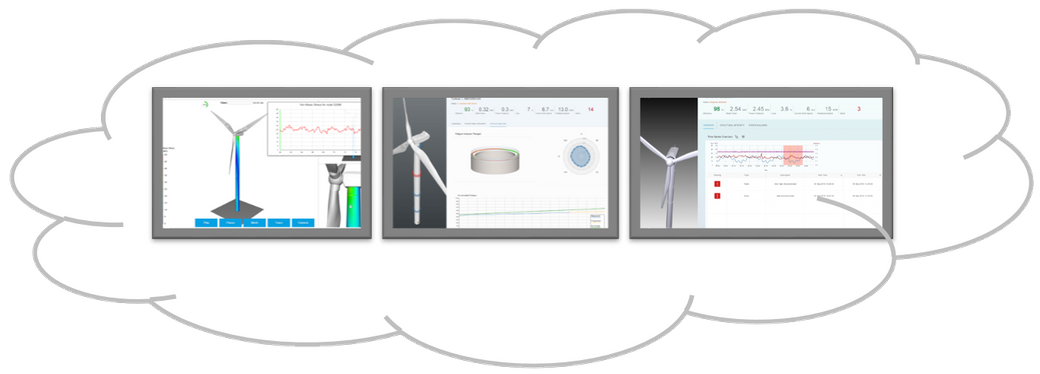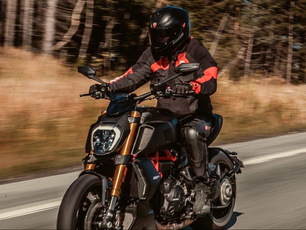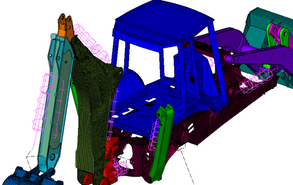There is currently a lot of inflated expectations about Digital Twins and IoT solutions for Structural Health Monitoring. Most IoT providers talk about data capture and cloud solutions without focusing on problem solving. They don't support local edge computing or analytics for live decition support, and their system performance is more applible to logistics than structural dynamics.
They seem to forget industrial value creation and hardware and software expenses exceeding most maintenance budgets. I can shear (see below) my experience with commercial IoT and digital twin solutions from several industrial IoT projects and NTNU courses in Digital Twin Technologies. They might provide great value, but the devil is in the details and there are many pitfalls!
Please contact me for IoT / DT advices or demos. I have programmed my own IoT system based on Python and Streamlit powered by open DT software solutions from openFEDEM. I can also share my Python and Streamlit code, enabling you to develop and test IoT solutions on your local host computer before doing any investments! Here are some public ongoing Digital twin projects (the most challenging IoT project results are confidential .... as usual)
A detailed model of the Palfinger knuckle boom crane on the research vessel Gunnerus is modelled and setup to run as a digital twin from both my own (see below) and SAPs IoT framework. This project is well documented by videos and papers (watch here).
Back in 2017, Rosenborg played very well and defeated AJAX in the Champion League qualification. Then large oscillations were discovered in the supporter arena. Those oscillations were obviously outside the comfort zone of the VIP guests below. I was asked to investigate the problem and instrumented the arean with both iPhones (initially) and later wireless Lord accelerometers to identify the problem. It was a resonance problem (see twin animation video below) triggered by the supporters playing the Pippi song(right video below). The problem is temporarly solved by RBK (playing "ræva" football) and happy hours in the supporter Pub (they now jump out of sync)
Together with FERRX, a provider of unique sensors for crack and corrioson detection, I have developed a digital twin model of the bridge. The FERRX sensors comes with a price tag, and I have dublicated the virtual bridge with numerous sensors for load and damage detection. The virtual model is calibrated based on accelerometer data sampled at 100 Hz during physical tests. Those tests revealed large trucks transporting stones from the nearby tunnel construction far above the 50 tonns limit. The work is ongoing.


Together with SAP, I have developed a digital twin model of the bridge using outputs from more than 20 Lord accelerometers. The bridge was old and suffered from degradation. Army vehicles and heavy trucks caused severe damage to the bridge before easter 2021. The instrumentation revealed a serious damage to the bridge support and the bridge was completely set out of service by the Norwegian traffic authority. See the story here

Windmills suffer from many unpredictable load cases like bird and lightening strikes on blades, gear box and slewing gear wear, tower damage due wind and unballanced turbine loads and support degradation due to tower oscillations. Most windmills are remotely located which makes maintenance and inspections time consuming and expensive. Especially for floating offshore windmills. Windmills are therefore perfect candidates for Digital Twin supported Predictive Maintenance without human interaction. I have experience from several windmill projects (Statkraft, Vestas and Sway), and I am currently preparing digital twin based monitoring for Trønderenergi / ANEO

Based on my dedication to fishing and offshore waste removal, I am currently pushing a granulator solution to the "Handelens Miljøfond". A granulator can reduce the transport costs with 90-95% enabling a circular economy in plastic waste collection and recycling. These numbers are proven by TOMRA when they developed a granulator for bottle recycling outside British malls between 2003-2006. I was doing the structural tests and optimizations of the granulator for ALCOA who manufactured the machines. I want to reuse and improve the technology by IoT / Digital twin solutions for remote Predictive Maintenance and damage detection.

Industrial robots only use actuator sensors to control the Tool Center Point (TCP) trajectory. TCP sensors are too expensive and influence the TCP dynamics on real robots. The robot control system is therefore not able to compensate for structural flexibility! SAP, SINTEF and NTNU have the software and hardware skills to solve this challenge. Based on FEDEM Digital Twin models of industrial robots, we can calibrate the reference trajectories during off-line programming. This will shorten the setup time for new robot lines and dramatically increase their precision without additional hardware costs. The same technology can be used to imnprove the precision of antennas and weapon systems.

High end bicycle companies like Hardrocx continuously search for the optimal frame design, e.g. a frame with optimal strength and weight ratio. In this process the structural loads acting during ride and handling must be identified. I am currently working on an instrumented Hardrocx bike (8 train gages, 1 IMU and 1 crank torque sensor) giving inputs to an inverse method for load identification.
The first attempt was not successful due to hardware limitations. The Arduino CPU and shells did not support the required sampling rate (100 Hz) of all sensors simultaneously. Please contact me if you know about hardware that is more powerful than Arduinos and Raspberry Pi's!

Although physical testing of motorcycles are more fun, I have performed numerous simulations of motorbikes to improve ride and handling. Some of my clients are Honda (motorcoss engines), Ducati (confidential), Triumph (gearboxes) and Moto GP bikes form (Suter Racing). In the right picture my former master student Arne Weiby is presenting his thesis and state of art motorbike simulations for Eskil Suter and his MotoGP team manager
I am also collaborating with SFOR and TUV in motorbike testing and improval for the Norwegian "Biltilsynet". I have approved numerous motorbike and automotive frames based on Digital Twin simulation and Testing. You can see some of them below and on my YouTube channel

I have been addicted to speed ever since Ferrari F1 team manager Nigel Bamber called me in 1990 to join a team making active suspension systems! Since then I have been working with automotive teams from Mazerati, Ferrari, Modena Design, Koenigsegg, Volvo, Ford and Fiat due to the unique multidiscipline mechanism simulation features of FEDEM. I have performed numerous simulations of cars to optimize everything from driveline integrity, crash safety to ride and handling.
I have also tested the G levels on Hydrolift boats in 70+ knots @ 1m wave height to identify the worst load cases for inertia relief analysis in NASTRAN! Fun but very painful when the worst G levels are in the range of 10-50G!
My students are not like other students. They try to impress Kristian von Koenigsegg, Bård Eker and Victor Rosenvinge about their engine cradle, suspension system, exhaust and monocoque designs!





Physical testing of heavy vehicle are also challenging and expensive due to the need of physical and expensive prototypes. So why not make a digital twin of them and test the virtual prototypes like John Deere, MOXY/DOOSAN, DAF and FORD do? Many of their vehicles are tested in FEDEM before prototypers are built. I have tested 11 tracktors for John Deere and performed chassies design and optimization for most MOXY trucks.
I can assist custom car builders in virtual testing needed to get vehicle approval from TUV and SFOR (I am working with both). I know the requirements and got the software tools!


Physical testing of road and aviation masts are extremely expensive for companies like Lattix and Intelligate. That is why I have performed numerous crash analysis of those masts the last decade. I have both standard vehicle and soft wing impactor (with an inherent indian chief) ABAQUS models for testing and approval of aviation and road masts and portals.



